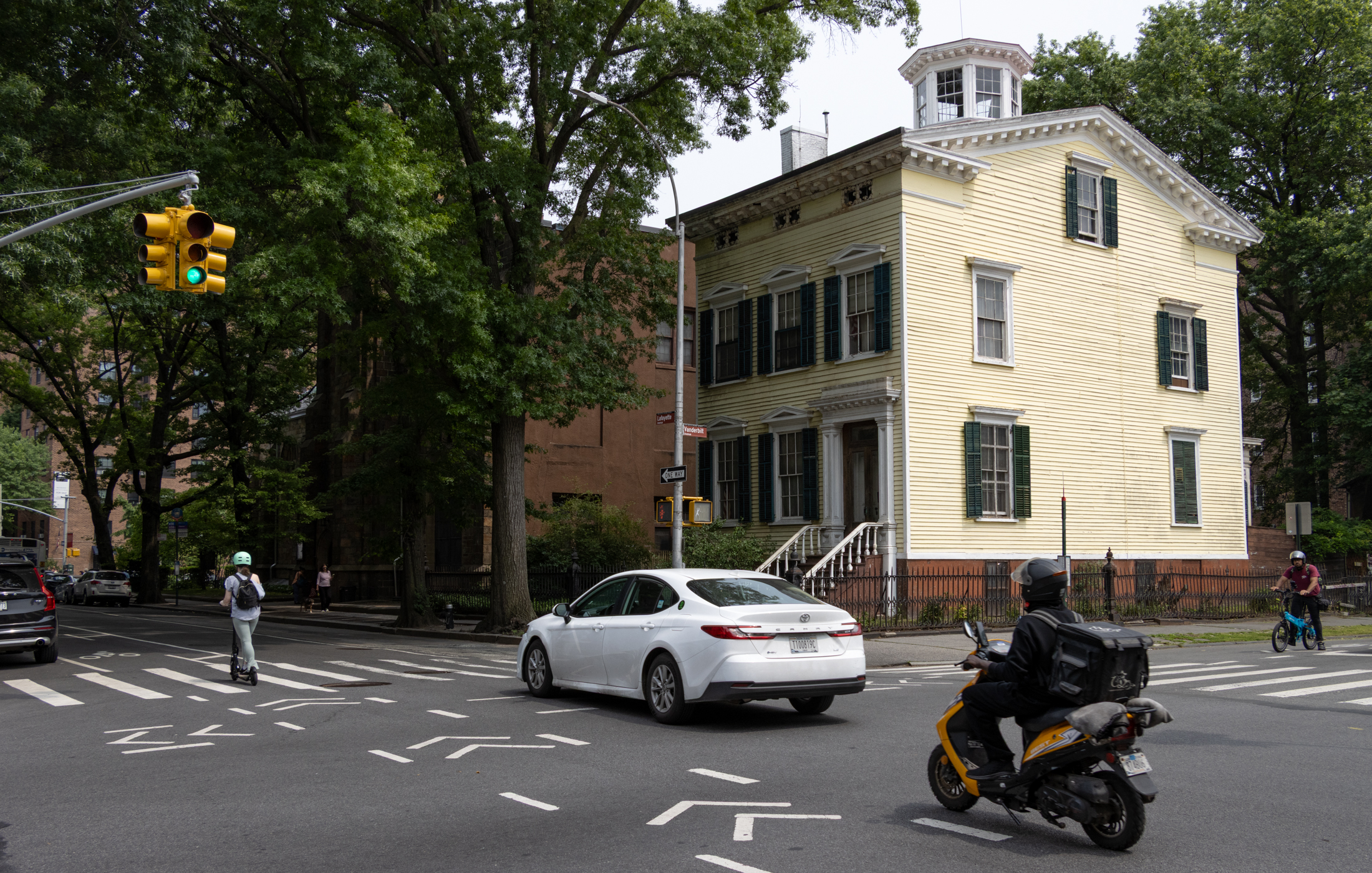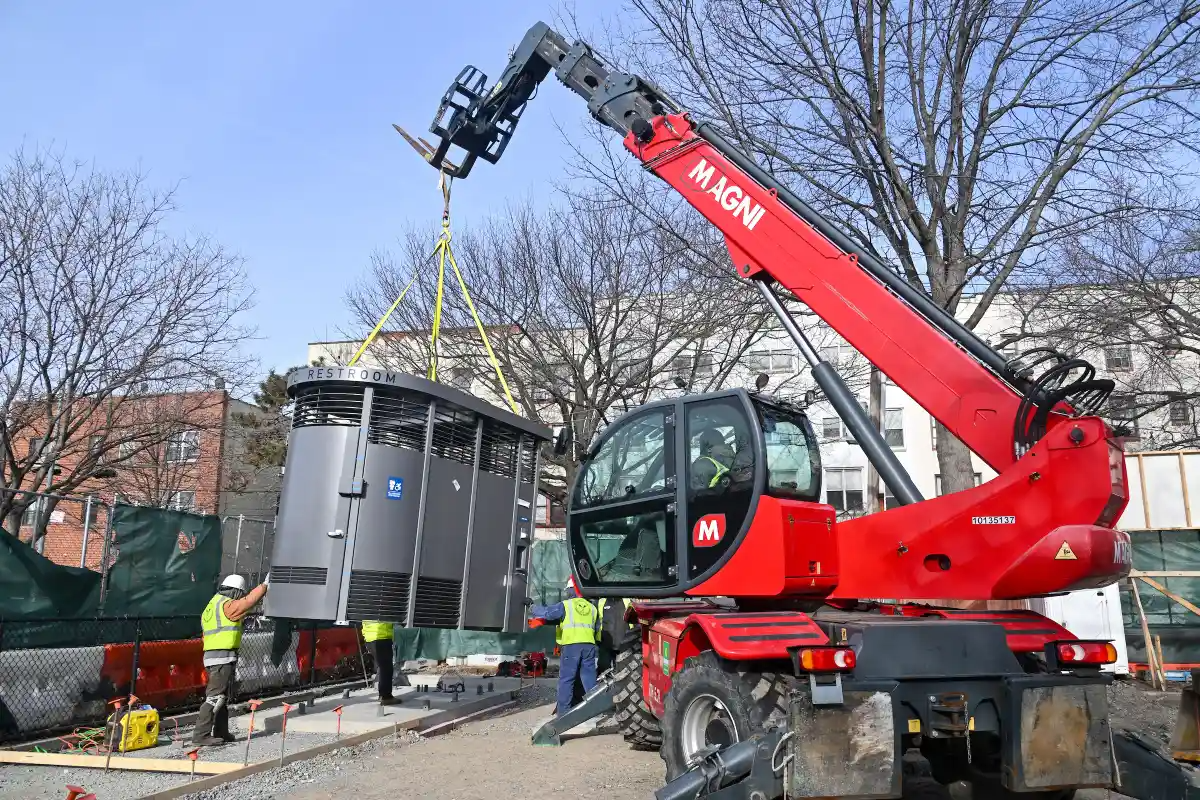Inside Third & Bond: Week 44
Sometime between the days of yore and yesteryear, it was common practice for builders all over New York to dump whatever they could find onto their sites in order to fill in holes or create higher grades. Similarly, they would remove whatever they wanted and dump it just about anywhere else. Today, this freewheelin’ dumping…


Sometime between the days of yore and yesteryear, it was common practice for builders all over New York to dump whatever they could find onto their sites in order to fill in holes or create higher grades. Similarly, they would remove whatever they wanted and dump it just about anywhere else. Today, this freewheelin’ dumping of historic fill is certainly over. In its place is a complex industry of hazardous and industrial waste streams. This week, as we finish disposing of 5′ of fill excavated from our site, we want to take you behind the construction fence and give you a sense of just how much goes into dealing with dirt.
It starts with the Phase 1. This is an environmental report that reviews the history of the site, especially the past uses. A Phase 2 often follows a Phase 1; its purpose is to narrow down any potential problems by both prescribing and reporting on environmental contaminant tests (e.g., SVOCs*, VOCs*, metals). Typically, a buyer won’t close on the acquisition of a piece of land without having seen the Phase 1 and 2. (See Week 13 for history of uses at Third & Bond.)
 Based on the Phase 2 and the design for the future of the site, the owner might then hire a company to dispose of whatever is on the site that must be removed. The removal might be instigated by the need to dig out basements or a parking garage, or because there are contaminants. That company for us on Third & Bond is Innovative Recycling Technologies. For the last month, Innovative has been picking up what we deem as waste at Third & Bond and trucking it off to its next resting place in East Brunswick, New Jersey. It seems fairly simple on our end we give Innovative a copy of the Phase 1 and 2, they give us a price. Then they show up with trucks and take the waste away. We pay them.
Based on the Phase 2 and the design for the future of the site, the owner might then hire a company to dispose of whatever is on the site that must be removed. The removal might be instigated by the need to dig out basements or a parking garage, or because there are contaminants. That company for us on Third & Bond is Innovative Recycling Technologies. For the last month, Innovative has been picking up what we deem as waste at Third & Bond and trucking it off to its next resting place in East Brunswick, New Jersey. It seems fairly simple on our end we give Innovative a copy of the Phase 1 and 2, they give us a price. Then they show up with trucks and take the waste away. We pay them.
But of course that’s hardly scratching the surface.
Before an environmental services company can give a reasonable price, it needs to know more about what is being removed. In most Brooklyn development scenarios, the removal is of historic fill, which is made up of debris left over from past demolitions and ash from incinerators, among other matter. Since a Phase 2 doesn’t determine whether something is hazardous, other tests approved by the EPA* are performed. The most common is the TCLP*. In this test, a sample is combined with a weak acid solution. Then it’s shaken for 18 hours and a sample of liquid is tested. This test simulates acid rain—acid releases metals which then travel through the soil substrate and can leach into our groundwater, among other problems.
Other tests that might be performed include ones for ignitability, reactivity, and corrosiveness. These are all part of the RCRA* series of tests that were put in place in 1976. There are a number of other tests, including those for PCBs* (often used for utilities) or perchloroethylene (from dry cleaners).
Contaminant test results combined with visual knowledge of what is being removed (i.e., how big are any chunks of debris in the fill) allow the environmental services company to come up with some facilities that might accept the waste. See, every facility has a permit to accept specific contaminants and requires specific tests. And then there are considerations such as: Facility A is an old landfill that is going to be turned into a park so the fill must have certain geotechnical capacities, or Facility B can’t accept trucks when it’s raining because their roadbeds can’t support it and you can’t chance postponing the removal for better weather. Transportation of the waste can be 50% of the total costs, so closer facilities are typically better. Innovative has shipped as far as Canada and Texas, but most often finds facilities in New York, New Jersey or Pennsylvania.
Of course, NY, NJ, and PA all have their own standards and regulations. Though they often test for the same things, they have different thresholds. So, something we have to dispose of in New York as hazardous might be considered clean fill in PA.
In our case, Innovative looked for a couple of facilities that take our kind of fill, figured out what kinds of tests they would need and the parameters for those tests, and how much it would cost to go there. And that’s when they gave us the price for East Brunswick. Our fill is going to beneficial use—the receiving landfill is using it for daily cover (i.e., using it to cover the new garbage the landfill gets each day). Our fill is having its third or fourth life, and doesn’t have to be treated.
Facilities open and close depending on weather, what they’ve scheduled to receive, breakdown of treatment equipment, meeting capacity, and other reasons. It takes time to find one and careful coordination to make sure the quirks of the construction process can match up to the quirks of the disposal process.
As Innovative reminded us, selecting a contractor to do this work is not something to be taken lightly. If you hire someone who disposes of your waste improperly, you could be on the hook. You might even be required to go to whatever facility or location that received it and dig it back up. Our summer vacations are planned and they don’t include digging our historic fill back out of the landfill. Thus, we are happy to let Innovative use its 17 years of experience to help us responsibly dispose of our waste. Now if only we could get to the bottom of what seems to be a layercake of past buildings’ basements buried deep…
*Abbreviations:
SVOCs= Semi-volatile organic compounds
VOCs= Volatile organic compounds
EPA= Environmental Protection Agency
TCLP= Toxicity Characteristic Leaching Procedure
RCRA= Resource Conservation and Recovery Act
PCBs= Polychlorinated biphenyl
Inside Third & Bond: Week 43 [Brownstoner]
Inside Third & Bond: Week 42 [Brownstoner]
Inside Third & Bond: Week 41 [Brownstoner]
Inside Third & Bond: Week 40 [Brownstoner]
Inside Third & Bond: Week 39 [Brownstoner]
Inside Third & Bond: Week 38 [Brownstoner]
From our lawyers: This is not an offering. No offering can be made until an offering plan is filed with the Department of Law of the State of New York.”





Is the blog available in a chronological list, i.e. with footer links going forward instead of backwards in time?
Or if you are IKEA, somebody conveniently steals 500,000 pounds of possibly toxic rubble.
http://gowanuslounge.wordpress.com/2007/01/12/red-hook-mystery-who-is-stealing-toxic-dirt-rubble-from-ikea/
Disposal rates are often calculated in the cubic yards. I’m told that clean soil disposed is around $30cy and really nasty stuff can be $300cy.
Never mind union labor costs. If they allowed you to just dump it all into the canal think how much more affordable your units could be.
Thanks for the informative post. What is the going rate to dispose of a tractor trailer truck load of clean fill vs something really nasty?
Very informative, thank you.
somewhat interesting. Thanks
Seriously…this is TMI.
44 Weeks??!!!!! Can they build this shit already!
The What
Someday this war is gonna end…